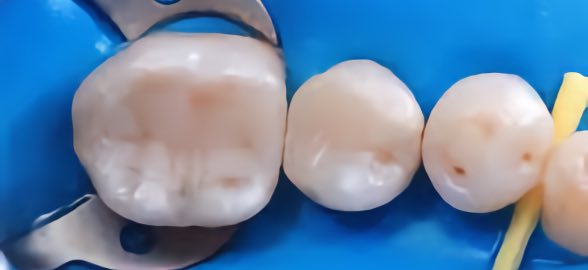In the early days of dentistry, patients with endodontic problems had no choice but to have their teeth extracted. Today, techniques and instruments have evolved. Endodontic problems are curable without the need to extract the tooth thanks to endodontics! Although techniques are evolving, endodontics is a complex practice and can lead to failure.
Successful endodontic treatment from the first time
Endodontic treatment, also called endodontic therapy, is used when the pulp of the tooth or ligament is inflamed, but also during infections such as cavities when the pulp is infected or during abscesses.
These are much more frequent than we think in patients. It is easy to detect inflammation or infection of the tooth that could lead to endodontic treatment.
Signs of an endodontic problem are:
- Pain during chewing and increased sensitivity to heat/cold;
- The tooth can change color;
- Swelling of the gums or face;
- Nanglions or fever.
To learn more about endodontic treatment, read our blog on root canal treatment

Steps in root canal treatment
Let's quickly recall the steps of a root canal treatment:
- Preoperative radiography
- Anesthesia
- Preparation of the surgical field
- Realization of the access cavity
- Identification and catheterization of the channels
- Definition of the working length with radiographic verification
- Shaping the channel
- Closing the channel
- Verification of the work by radiography
If these steps are properly followed, root canal treatment should be carried out under good conditions and with good recovery.
However, failure to follow these steps can cause severe complications and further pain for your patient, however, it should be noted that some reprocessing is not possible, resulting in tooth extraction.
The best instruments for successful endodontics for sure!
At Dentaltix, we offer you products from our catalogue that may be of interest to you and allow you to work efficiently.
- First of all, it is necessary to protect the working area and for this reason, we have the best dental dams on the market: the Nictone dams.
- A good opening of the root canal begins with a high-performance turbine and a milling cutter adapted to the patient's situation, depending on whether an amalgam or a crown is already placed.
- It is important to clean the pipe after each file passage to avoid external contamination. For this reason we recommend Dentaflux hypochlorite.
- Finally, when applying the file, we offer you the best endodontic files on the market from the VDW brand, the Reciproc Blue are more flexible and therefore offer a reduced risk of rupture.
As you can see, these steps are close to that of endodontics. However, the instruments you use will be key to ensuring the best possible treatment. Discover the best reendodontic files and how to use them!

What to do in case of endodontic failure?
Endodontics is a complex practice, and despite the precautions you can take, treatment failure can happen! In this case, endodontic reprocessing should be performed. What are the particularities of endodontic reprocessing and how can it be managed?
Manage patients who come for reendodontics
In the case of a failure of endodontic treatment, patients have a bad experience of endodontic treatment, so the doctor must be able to adapt his speech, because being confronted with a new practitioner, knowing that you are slightly tortured before him, can cause reluctance and fear in your new patient. It is important to listen to your patient and be empathetic with him/her in the face of pain. Endodontic reprocessing can be difficult for a patient to live physically, but also mentally. You must be able to prepare your patient psychologically. For this, the practitioner must have a good preparation beforehand.
Steps to follow for endodontic reprocessing:
- The installation of existing equipment on the patient
- The unblocking of previous treatment
- Access to channels
- After disinfection and re-cleaning, the filling can be done
- Reconstruction of the tooth
As you can see, these steps are close to the ones for endodontics. However, the instruments you use will be key to ensuring the best possible treatment. Discover the best reendodontic files and how to use them!



